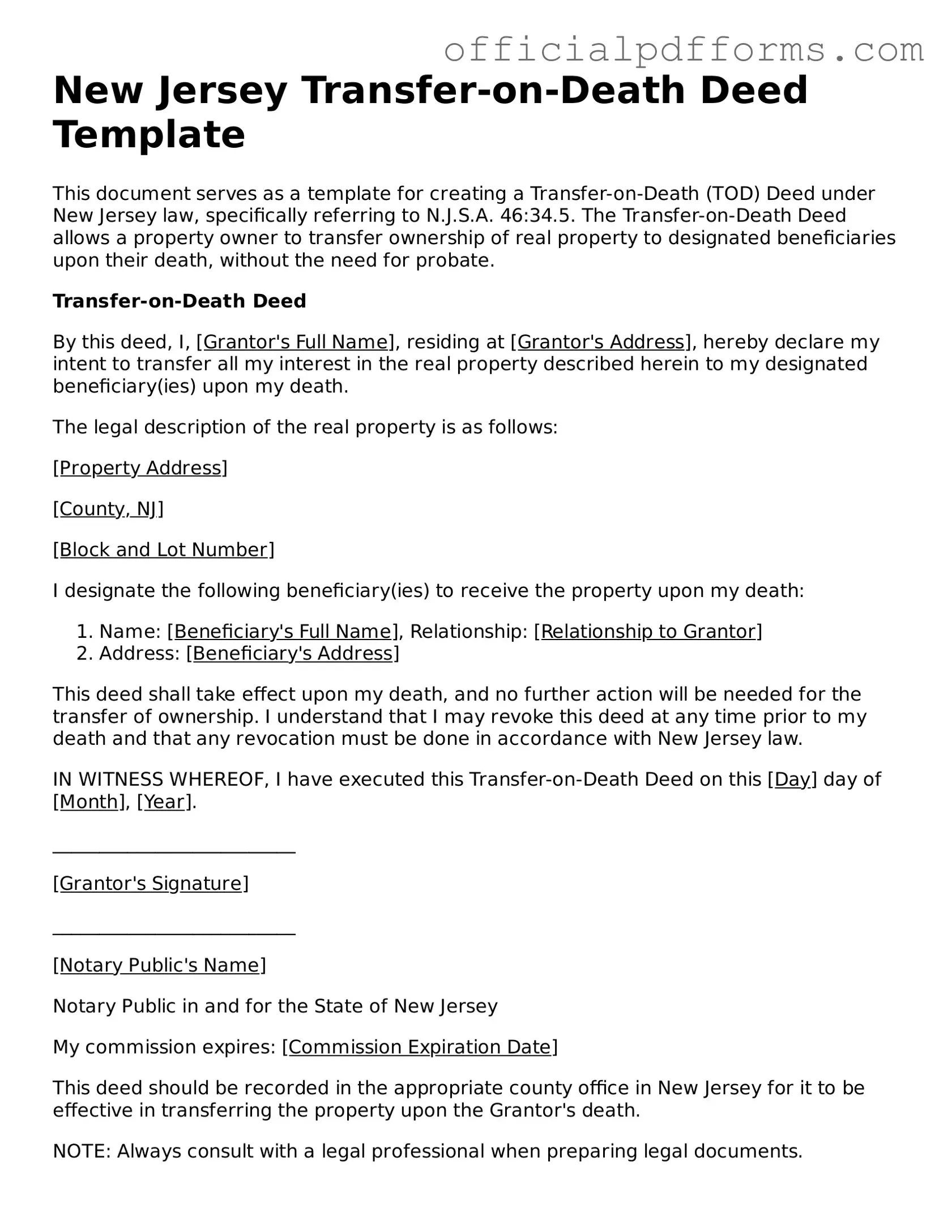What is a Transfer-on-Death Deed in New Jersey?
A Transfer-on-Death Deed (TOD Deed) is a legal document that allows an individual to transfer real estate to a designated beneficiary upon their death. This type of deed enables property owners to pass their property directly to their chosen heirs without the need for probate, simplifying the transfer process. In New Jersey, this deed must be properly executed and recorded to be effective. It is important to note that the property remains under the control of the owner during their lifetime, and they can sell or mortgage the property without any restrictions.
Who can be designated as a beneficiary in a TOD Deed?
In New Jersey, any individual or entity can be named as a beneficiary in a Transfer-on-Death Deed. This includes:
-
Family members, such as children or spouses
-
Friends
-
Trusts or organizations
However, it is crucial to ensure that the beneficiary is legally capable of receiving the property. For instance, minors may require a guardian to manage the property until they reach adulthood. Additionally, if multiple beneficiaries are named, it is advisable to specify how the property will be divided among them.
How do I create and record a Transfer-on-Death Deed in New Jersey?
Creating a Transfer-on-Death Deed involves several steps:
-
Obtain the appropriate form, which can typically be found on the New Jersey Division of Revenue and Enterprise Services website or through legal resources.
-
Fill out the form with accurate information, including the property description and the beneficiary's details.
-
Sign the deed in the presence of a notary public to ensure its validity.
-
Record the completed deed with the county clerk's office in the county where the property is located. This step is essential for the deed to take effect.
After recording, the deed will become part of the public record, and the designated beneficiary will have rights to the property upon the owner's death.
Can I revoke or change a Transfer-on-Death Deed after it has been executed?
Yes, a Transfer-on-Death Deed can be revoked or changed at any time before the property owner's death. To do this, the owner must execute a new deed that explicitly revokes the previous one or file a written revocation with the county clerk's office. It is advisable to follow the same recording process as the original deed to ensure that the revocation is legally recognized. Additionally, if the owner wishes to change the beneficiary, they can do so by creating a new TOD Deed that names the new beneficiary, effectively replacing the old one.
